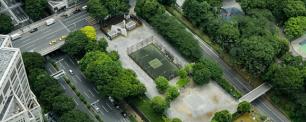The European Environment Agency highlights an article by Lluís Brotons and Virgilio Hermoso on connecting protected areas with green infrastructure
A scientific study on the efficiency of planning to connect land on a European scale, the authors of which include Lluís Brotons –a CSIC researcher and member of the InForest research unit run jointly by CREAF and the CTFC– and Virgilio Hermoso –a CTFC researcher– has been included in a list of references in a briefing published by the European Environment Agency (EEA).
The EEA has referenced the article in question in its latest briefing as part of a compendium of scientific research on European ecosystems and the positive impact of connecting protected areas with green infrastructure. The article, which also involved other specialists from the CSIC and CREAF, draws on the master’s thesis written at the Autonomous University of Barcelona by its lead author, Mònica Lanzas.
The Agency’s main conclusion is that Natura 2020, the European Union’s network of protected areas, could be better interconnected if green infrastructure were used to create a trans-European nature network. According to a EEA report from July 2020, 15% of Natura 2000 sites are currently cut off from other natural areas by motorways and other infrastructure, reducing their capacity to provide ecosystem services.
Lluís Brotons highlights the importance of such studies being used by the European Commission’s environmental decision-makers. "It’s an even more relevant gauge of a work’s impact than traditional bibliographic citations", he says.
Virgilio Hermoso, meanwhile, stresses how vital it is that "decision-making be based on science, as in this case". He also remarks that "the green infrastructure network, which is just beginning to be designed from scratch and involves complex decisions, could be a good opportunity to strengthen ties between science and territorial management".
Published in the scientific journal Science of The Total Environment, the article shows that it is more efficient to plan protected areas that could act as green infrastructure on a European scale than on a national scale. The main advantage would consist of using less land to meet biodiversity conservation goals and maintain ecosystem services. The research team used software to evaluate two alternative scenarios for the creation of green infrastructure, one of them based on the European Union as a whole, involving planning for a continent-wide network, and the other based on separate Member States. The objectives of the two scenarios were the same, namely to prevent biodiversity loss, encompassing a wide distribution of species and habitats, and to guarantee the provision of five ecosystem services, specifically carbon storage, prevention of soil erosion, water retention, pollination potential and recreation opportunities.
Rigour and independence
As an agency of the European Union, the EEA provides rigorous and independent information on the environment. Its aim is to support sustainable development by contributing to significant and measurable improvement in Europe's environment. To that end, it provides policymakers with high quality, validated, relevant and targeted data and information. The knowledge in question not only forms the basis of both thematic and integrated environmental assessments, but also supports environmental management processes, environmental policymaking, the evaluation of such policies, and citizen participation.
The areas in which the EEA works are biodiversity, land use, soil, agriculture, water and the marine environment, adaptation to and mitigation of climate change, air pollution, environment and health, sustainability transitions, resource efficiency and waste, energy, industry and transport.
Referenced study:
Lanzas, M., Hermoso, V., de-Miguel, S., Bota, G., Brotons, L., 2019. Designing a network of green infrastructure to enhance the conservation value of protected areas and maintain ecosystem services. Sci. Total Environ. 651, 541–550.







